| Pages:
1
..
6
7
8 |
mayko
International Hazard
    
Posts: 1218
Registered: 17-1-2013
Location: Carrboro, NC
Member Is Offline
Mood: anomalous (Euclid class)
|
|
A friend of mine had that on the teevee just last night! I was excited; I've thought Robert Hazen had a really interesting perspective on
biogeochemistry since I read the original "Life's Rocky Start" in Scientific American.
Another interesting article by him is this one, which discusses the changes in mineral diversity over geologic time, in particular the impact of biota
on the mineral world (emphasis mine):
| Quote: |
The mineralogy of terrestrial planets evolves as a consequence of a range of physical, chemical,
and biological processes. In pre-stellar molecular clouds, widely dispersed microscopic dust particles contain approximately a dozen refractory
minerals that represent the starting point of planetary mineral evolution. Gravitational clumping into a protoplanetary disk, star formation, and the
resultant heat- ing in the stellar nebula produce primary refractory constituents of chondritic meteorites, including chondrules and calcium-aluminum
inclusions, with ~60 different mineral phases. Subsequent aque- ous and thermal alteration of chondrites, asteroidal accretion and differentiation,
and the consequent formation of achondrites results in a mineralogical repertoire limited to ~250 different minerals found in unweathered meteorite
samples. Following planetary accretion and differentiation, the initial mineral evolution of Earth’s crust
depended on a sequence of geochemical and petrologic processes, including volcanism and degassing, fractional crystallization, crystal settling,
assimilation reactions, regional and contact metamorphism, plate tectonics, and associated large-scale fluid-rock interactions. These processes
produced the first continents with their associated granitoids and pegmatites, hydrothermal ore deposits, metamorphic terrains, evaporites, and zones
of surface weathering, and resulted in an estimated 1500 different mineral species. According to some origin-of-life scenarios, a planet must progress
through at least some of these stages of chemical processing as a prerequisite for life. Biological processes began to affect Earth’s surface
mineralogy by the Eoarchean Era (~3.85–3.6
Ga), when large-scale surface mineral deposits, including banded iron formations, were precipitated under the influences of changing atmospheric and
ocean chemistry. The Paleoproterozoic “Great Oxida- tion Event” (~2.2 to 2.0 Ga), when atmospheric oxygen may have risen to >1% of modern
levels, and the Neoproterozoic increase in atmospheric oxygen, which followed several major glaciation events, ultimately gave rise to multicellular
life and skeletal biomineralization and irreversibly transformed Earth’s surface mineralogy. Biochemical processes may thus be responsible,
directly or indirectly, for most of Earth’s 4300 known mineral species. The stages of mineral evolution arise from three primary
mechanisms: (1) the progressive separation
and concentration of the elements from their original relatively uniform distribution in the pre-solar nebula; (2) an increase in range of intensive
variables such as pressure, temperature, and the activities of H2
O, CO2 , and O2 ; and (3) the generation of far-from-equilibrium conditions by living systems.
The sequential evolution of Earth’s mineralogy from chondritic simplicity to Phanerozoic complex- ity introduces the dimension of geologic time to
mineralogy and thus provides a dynamic alternate approach to framing, and to teaching, the mineral sciences.
|
Hazen, R. M., Papineau, D., Bleeker, W., Downs, R. T., Ferry, J. M., McCoy, T. J., … Yang, H. (2008). Mineral evolution. American Mineralogist,
93(11-12), 1693–1720. doi:10.2138/am.2008.2955
Attachment: Hazen et al. - 2008 - Mineral evolution.pdf (4.6MB)
This file has been downloaded 903 times
al-khemie is not a terrorist organization
"Chemicals, chemicals... I need chemicals!" - George Hayduke
"Wubbalubba dub-dub!" - Rick Sanchez
|
|
|
crystal grower
Hazard to Others
  
Posts: 474
Registered: 3-1-2016
Location: Os Petrosum
Member Is Offline
Mood: Puzzled
|
|
Hello do you have any idea what this stuff could be ?
it´s partially glassy and the rest is porous.
It´s quite hard but not very heavy.
And it isn´t dissolving in common acids (I tried HCl, H2SO4, HNO3)
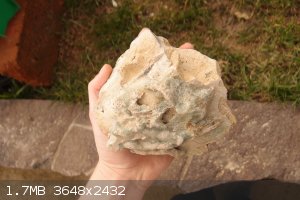 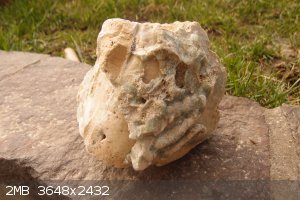 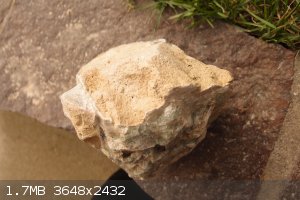 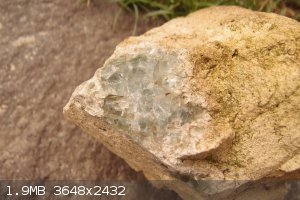
|
|
|
IrC
International Hazard
    
Posts: 2710
Registered: 7-3-2005
Location: Eureka
Member Is Offline
Mood: Discovering
|
|
Looks like some form of common opal, or mix of clear, white base opal, creamy opal, opal with various impurities. Possibly a sedimentary deposited
form of SiO2·nH2O. If so it explains why it resists the acids you tried, you need HF (or hot NaOH?). Just guessing but it looks nearly identical to a
form I found near the Hieroglyphic Mountains in Arizona. An entire side of a mountain all the way down into the valley of the stuff. They were
completing the dam project and before I could do much digging and investigating the whole area became part of the bottom of what is now Lake Pleasant.
Bastards. I never learned how to use scuba gear. Decades ago the whole area was loaded with incredible amounts of cyanide in leach beds by an old
timer known to the area as 'Cyanide Harry'. No I never went swimming in that lake but many do. Either the state officials in charge of the project did
not know or were not concerned as no cleanup was ever done of that valley before they flooded it. Off topic but a little bit of history that may
interest someone. One of the many reasons I only drink bottled spring water, you just cannot trust municipal water supplies.
"Science is the belief in the ignorance of the experts" Richard Feynman
|
|
|
crystal grower
Hazard to Others
  
Posts: 474
Registered: 3-1-2016
Location: Os Petrosum
Member Is Offline
Mood: Puzzled
|
|
Thanks for answer.
I also thought that it is opal but I'm not 100% sure becouse opal isn't a common mineral in the locality where I have found it.
And the porous material looks like some vulcanic rock ( maybe ryolite??) but the locality where I have found it is core mountain.
Maybe it could be some artificial material but what the hell it could be  ? ?
So I'm confused a little bit about it . .
|
|
|
diddi
National Hazard
   
Posts: 723
Registered: 23-9-2014
Location: Victoria, Australia
Member Is Offline
Mood: Fluorescent
|
|
I am not sure that it is opal ("potch" - opal without coloured bits) . potch tends to be amorphous, but this is clearly broken crystals with a
cleavage inside the crystal that resembles broken opal (and many other materials). I think more investigation is needed here. and also potch is very
soft. easy ground away with sand paper, so I am tending to discount opal as very likely. I can see a number of places where there is evidence of 120
degree facet angles suggesting perhaps it is a badly smashed quartz cluster on some sort of matrix. there is also a greenish looking material that
has a "bubbly" looking habit. this may be prehnite which is known to associate with quartz. if the location is known, see if prehnite is typical to
the area. the material is far to porous for rhyolite, btw.
Beginning construction of periodic table display
|
|
|
IrC
International Hazard
    
Posts: 2710
Registered: 7-3-2005
Location: Eureka
Member Is Offline
Mood: Discovering
|
|
Looked up close at all 4 pics again and in some areas I want to agree with diddi but in others like the smooth rounded areas in pic4 I don't. Unless
some process in nature could form such smooth rounded areas in what is actually a crystal structure. Very tough call when one cannot hold it in hand.
The Opal I found years ago was a milky white with some places trending to clear unlike these pictures. Seems he could break off a piece in one of the
smooth rounded areas and look at the exposed surfaces for indications of actually being a crystal structure. As was stated in another post trying to
determine minerals is a hard call from nothing but images. Will prehnite resist all the acids he tried?
"Science is the belief in the ignorance of the experts" Richard Feynman
|
|
|
diddi
National Hazard
   
Posts: 723
Registered: 23-9-2014
Location: Victoria, Australia
Member Is Offline
Mood: Fluorescent
|
|
not sure about the prehnite with acid, but I can find some to try. yeh, it is very tricky to tell anything much without having a good look and to
feel the texture, density etc. water wear will soon cause that sort of rounding, and prehnite has a natural round habit anyway, so a bit of
weathering could do the trick. it would be interesting to crack it open or cut it.
Beginning construction of periodic table display
|
|
|
hyfalcon
International Hazard
    
Posts: 1003
Registered: 29-3-2012
Member Is Offline
Mood: No Mood
|
|
In pic 1, is that a small selenite rose in the the lower left of the specimen, that I see? I'm not sure, but I don't think that would react with
those acids either would it?
I get the impression of a shattered vug collapse followed by hydrothermal deposits.
[Edited on 24-2-2016 by hyfalcon]
|
|
|
Morgan
International Hazard
    
Posts: 1694
Registered: 28-12-2010
Member Is Offline
Mood: No Mood
|
|
Another sneaky death rock in the news.
http://www.nbcnews.com/health/cancer/court-orders-johnson-jo...
[Edited on 24-2-2016 by Morgan]
|
|
|
crystal grower
Hazard to Others
  
Posts: 474
Registered: 3-1-2016
Location: Os Petrosum
Member Is Offline
Mood: Puzzled
|
|
Quote: Originally posted by hyfalcon  | In pic 1, is that a small selenite rose in the the lower left of the specimen, that I see? I'm not sure, but I don't think that would react with
those acids either would it?
I get the impression of a shattered vug collapse followed by hydrothermal
deposits.
[Edited on 24-2-2016 by hyfalcon] |
It's not selenite because the whole specimen is pretty hard.
When I put a piece into fire it was glowing with yellow-orange colour and the edges has rounded.
And it doesn't react even with hot HCl (prehnite should react as far as I know).
+It looks more like some glass then crystals.
I add some detail images .
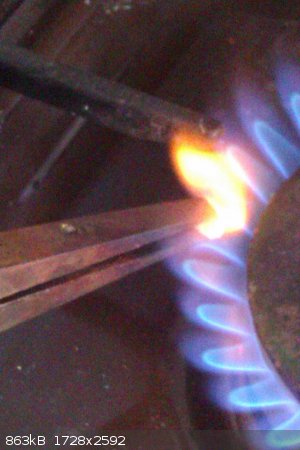 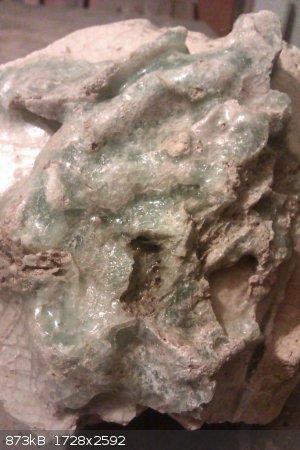 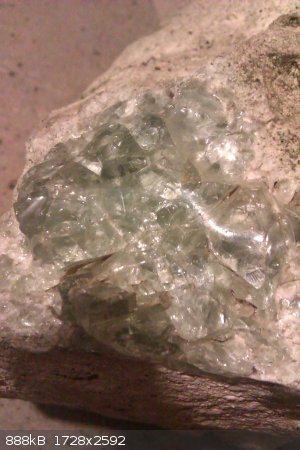
|
|
|
diddi
National Hazard
   
Posts: 723
Registered: 23-9-2014
Location: Victoria, Australia
Member Is Offline
Mood: Fluorescent
|
|
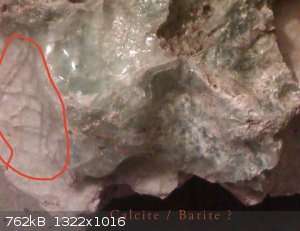
Beginning construction of periodic table display
|
|
|
crystal grower
Hazard to Others
  
Posts: 474
Registered: 3-1-2016
Location: Os Petrosum
Member Is Offline
Mood: Puzzled
|
|
What did u mark here?
|
|
|
diddi
National Hazard
   
Posts: 723
Registered: 23-9-2014
Location: Victoria, Australia
Member Is Offline
Mood: Fluorescent
|
|
it says on the picture
Beginning construction of periodic table display
|
|
|
crystal grower
Hazard to Others
  
Posts: 474
Registered: 3-1-2016
Location: Os Petrosum
Member Is Offline
Mood: Puzzled
|
|
No it isn't calcite because it doesn't react with HCl.
I'm not sure if it's barite, it looks like cracked glass or something similiar, I don't think that it's crystal structure.
Is there any good test on baryte (beside its density)?
|
|
|
IrC
International Hazard
    
Posts: 2710
Registered: 7-3-2005
Location: Eureka
Member Is Offline
Mood: Discovering
|
|
https://en.wikipedia.org/wiki/Birefringence
If it was Calcite this property should be evident.
"Science is the belief in the ignorance of the experts" Richard Feynman
|
|
|
crystal grower
Hazard to Others
  
Posts: 474
Registered: 3-1-2016
Location: Os Petrosum
Member Is Offline
Mood: Puzzled
|
|
So what are your conclusions about this rock?
I know it's hard to tell from an image but I want to know your final opinions anyway.
Thanks.
|
|
|
elementcollector1
International Hazard
    
Posts: 2684
Registered: 28-12-2011
Location: The Known Universe
Member Is Offline
Mood: Molten
|
|
Went up to Lake Erie today to find these curious things:
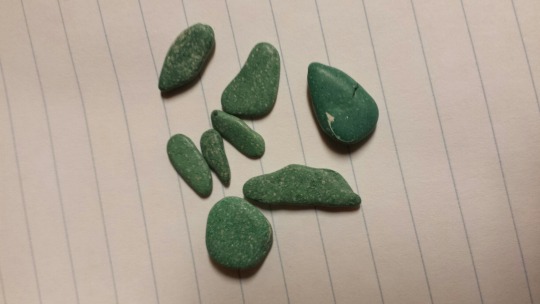
They're naturally that green, as far as I can tell. But what are they? I noticed quite a few lava-rocks on the beach as well, if that helps.
EDIT: Close-up of a few of the rocks.
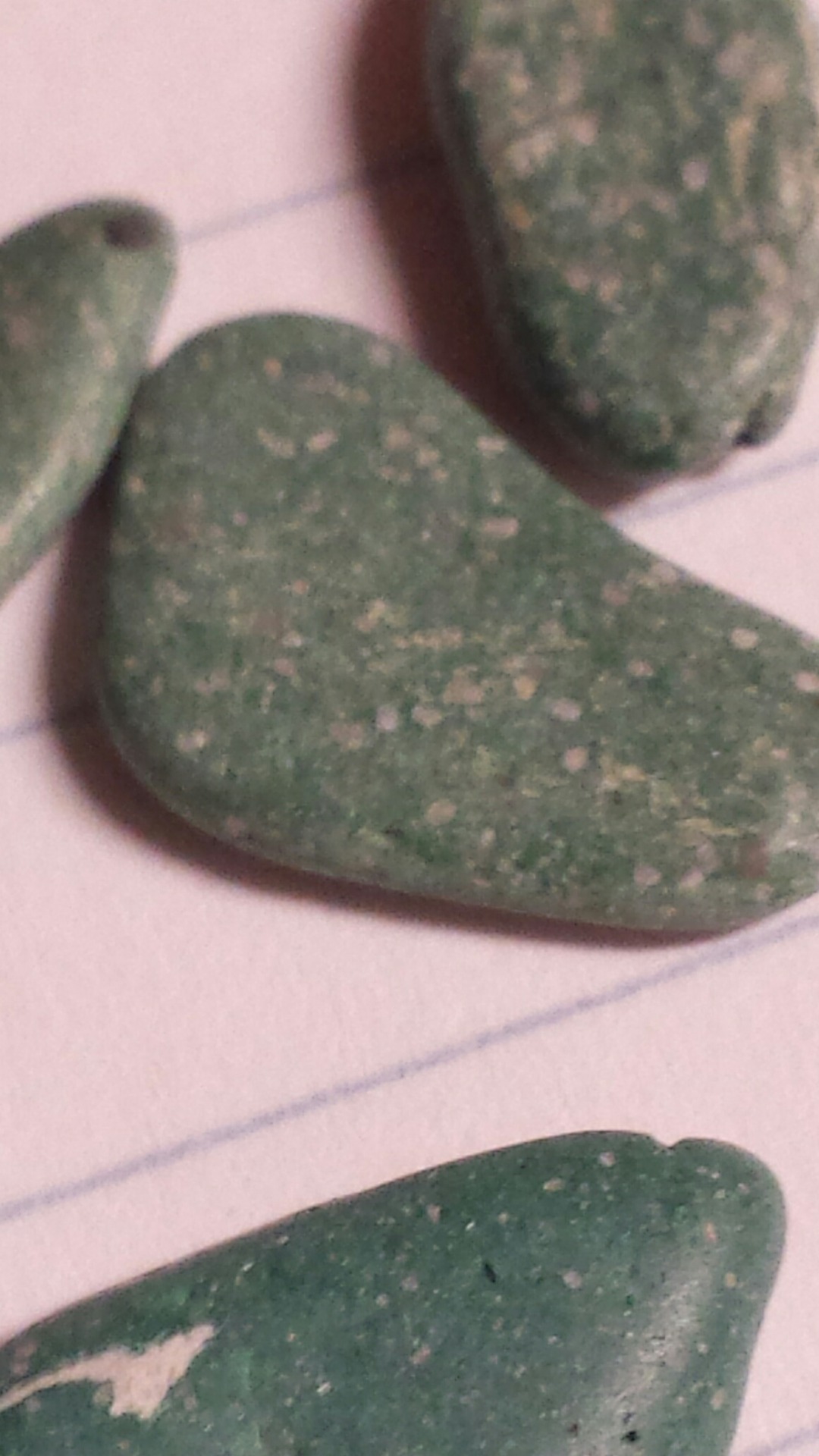
[Edited on 3-10-2016 by elementcollector1]
Elements Collected:52/87
Latest Acquired: Cl
Next in Line: Nd
|
|
|
diddi
National Hazard
   
Posts: 723
Registered: 23-9-2014
Location: Victoria, Australia
Member Is Offline
Mood: Fluorescent
|
|
I am going with epidote rich unakite 
Beginning construction of periodic table display
|
|
|
Morgan
International Hazard
    
Posts: 1694
Registered: 28-12-2010
Member Is Offline
Mood: No Mood
|
|
Lots of little fun facts about our tiniest rocks and the global impact of what we're doing. Quite an informative documentary really.
"Selling sand to the Arabs"
https://www.youtube.com/watch?v=_nRP9TQ7uW8&feature=yout...
"Desert sand is the wrong kind of sand."
https://www.youtube.com/watch?v=_nRP9TQ7uW8&feature=yout...
[Edited on 16-7-2016 by Morgan]
|
|
|
Morgan
International Hazard
    
Posts: 1694
Registered: 28-12-2010
Member Is Offline
Mood: No Mood
|
|
Some aspects of mica, interesting to see the source and how it's mined.
The Ugly Face of Beauty
https://rtd.rt.com/films/the-ugly-face-of-beauty/#.V8skHbz5K...
|
|
|
mayko
International Hazard
    
Posts: 1218
Registered: 17-1-2013
Location: Carrboro, NC
Member Is Offline
Mood: anomalous (Euclid class)
|
|
Quote: Originally posted by mayko  |
A friend of mine had that on the teevee just last night! I was excited; I've thought Robert Hazen had a really interesting perspective on
biogeochemistry since I read the original "Life's Rocky Start" in Scientific American.
Another interesting article by him is this one, which discusses the changes in mineral diversity over geologic time, in particular the impact of biota
on the mineral world (emphasis mine):
|
Looks like Hazen and company have another publication on this subject!
| Quote: |
Geologists have identified about 200 minerals that formed due to the hustle and bustle of human activity. Many of these unintentionally formed
minerals appeared on Earth during the past two centuries, a blip in the timescale of thousands to millions of years that geologists typically work
with.
[...]
“We are inadvertently forming new minerals all the time,” says Marcus J. Origlieri, a coauthor on Hazen’s paper and an expert on rare minerals
at the University of Arizona. Origlieri notes that many of the 208 minerals were only recently discovered in mining tunnels and smelters left over
from Cold War-era uranium extraction and processing.
“Because the mines have been sitting idle without any forced airflow, the humidity conditions are probably ripe for some of these things to form
that wouldn’t have formed otherwise,” says Anthony R. Kampf, a curator emeritus at the Natural History Museum of Los Angeles County. He identified
more than two dozen of the minerals on Hazen’s list.
|
http://cen.acs.org/articles/95/i15/Minerals-formed-due-peopl...
I haven't read the article yet, but it looks interesting!
Attachment: On the mineralogy of the Anthropocene Epoch.pdf (1.6MB)
This file has been downloaded 738 times
al-khemie is not a terrorist organization
"Chemicals, chemicals... I need chemicals!" - George Hayduke
"Wubbalubba dub-dub!" - Rick Sanchez
|
|
|
Σldritch
Hazard to Others
  
Posts: 309
Registered: 22-3-2016
Member Is Offline
Mood: No Mood
|
|
I found these close to a galena mineralisation. It looks like someone stuck some gum to the rock. Im think it is wurtzite or quartz. Copper scratches
some parts of it while others scratch glass. Maybe a mixture? Clearly i have no idea.
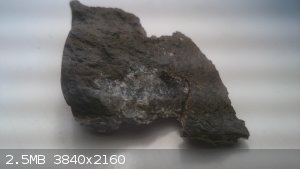 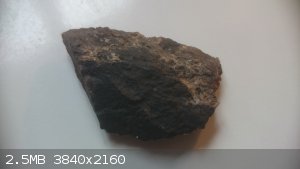
|
|
|
mayko
International Hazard
    
Posts: 1218
Registered: 17-1-2013
Location: Carrboro, NC
Member Is Offline
Mood: anomalous (Euclid class)
|
|
Here's some rock flour from Alaska; I gathered this from a river when I visited with my family in the autumn. The water was a weird muddy grey with a
suspension of this stuff, which is finely ground rock pulverized by glacial action:
https://en.wikipedia.org/wiki/Rock_flour
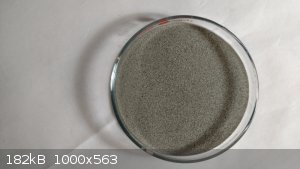
al-khemie is not a terrorist organization
"Chemicals, chemicals... I need chemicals!" - George Hayduke
"Wubbalubba dub-dub!" - Rick Sanchez
|
|
|
elementcollector1
International Hazard
    
Posts: 2684
Registered: 28-12-2011
Location: The Known Universe
Member Is Offline
Mood: Molten
|
|
Neat! As for the tan/clear rock above, I'm beginning to think it's chalcedony or something similar - quartz doesn't react appreciably with many acids.
Try NaOH and see if that changes?
Elements Collected:52/87
Latest Acquired: Cl
Next in Line: Nd
|
|
|
Demandred
Harmless

Posts: 1
Registered: 8-2-2018
Member Is Offline
Mood: No Mood
|
|
Quote: Originally posted by diddi  | heres a pretty pic for you.... crystalline Stibnite (Sb2S3)
this is crushable and dissolves in acids!
|
How would you go about purifying it?
|
|
|
| Pages:
1
..
6
7
8 |